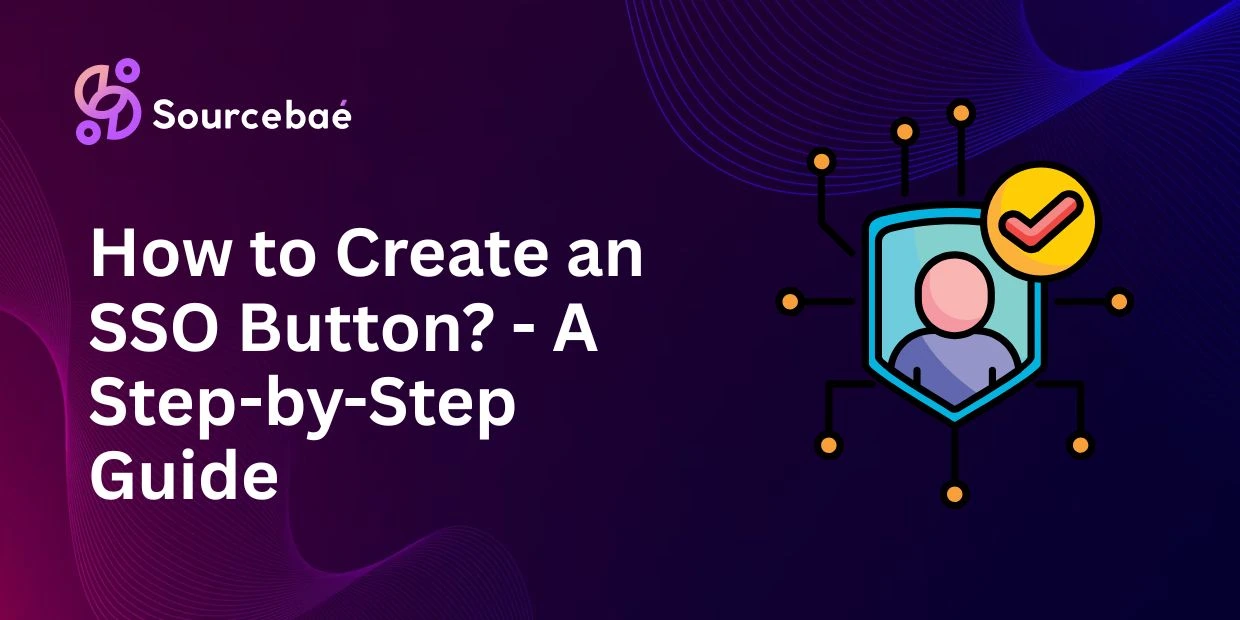In today’s digital world, where users have multiple accounts and applications to manage, providing a seamless and secure authentication experience is crucial for businesses. Single Sign-On (SSO) is a powerful solution that allows users to access multiple applications with a single set of login credentials. In this comprehensive guide, we will explore how to create an SSO button, making the user experience more efficient and secure.
Understanding the Basics of SSO
Before we delve into the details of creating an SSO button, it’s essential to grasp the fundamentals of Single Sign-On. We’ll cover the key concepts, benefits, and protocols that underpin SSO implementations.
Choosing the Right SSO Protocol
There are several SSO protocols available, such as OAuth, SAML, and OpenID Connect. Each protocol has its strengths and use cases. We’ll help you select the most appropriate SSO protocol based on your application’s requirements.
Setting Up Identity Providers (IdP)
An Identity Provider is a crucial component of the SSO ecosystem. We’ll guide you through the process of setting up an IdP, where user credentials are stored and verified.
Configuring Service Providers (SP)
Service Providers are the applications or websites that rely on the Identity Provider for user authentication. We’ll show you how to configure your applications as Service Providers to work seamlessly with the IdP.
Implementing OAuth for SSO
OAuth is one of the most widely used SSO protocols for web and mobile applications. Learn how to implement OAuth to enable SSO for your applications securely.
Leveraging SAML for Enterprise SSO
SAML (Security Assertion Markup Language) is popular for enterprise-level SSO. Discover how to leverage SAML to create an SSO button for your organization’s applications.
Integrating OpenID Connect for Seamless Authentication
OpenID Connect is a modern and user-friendly SSO protocol. We’ll guide you through the integration process, ensuring a smooth authentication experience for your users.
Adding the SSO Button to Your Website
Now that you have a robust SSO infrastructure in place, it’s time to create the SSO button and add it to your website. We’ll provide you with code snippets and examples for different platforms.
Ensuring Security and Privacy in SSO
Security is paramount in any authentication system. Discover best practices to secure your SSO implementation and protect user privacy.
Handling Errors and Troubleshooting
Even with a well-designed SSO implementation, occasional errors may occur. Learn how to troubleshoot and resolve common SSO issues efficiently.
Testing Your SSO Button
Thorough testing is crucial before deploying your SSO button to the live environment. We’ll outline comprehensive test scenarios to ensure a successful launch.
Monitoring and Maintaining SSO
Once your SSO button is live, you’ll need to monitor its performance and handle maintenance tasks. We’ll provide tips on how to ensure the long-term success of your SSO implementation.
SSO Best Practices from Industry Experts
Get insights from industry experts on their experiences with SSO implementations. Learn from their successes and challenges to make informed decisions.
Advantages of Using SSO for Businesses
SSO offers numerous benefits for businesses, including increased security, improved user experience, and simplified access management. Discover how SSO can transform your organization’s authentication landscape.
SSO and User Experience: A Perfect Match
Explore the positive impact of SSO on user experience and how it can enhance customer satisfaction and loyalty.
Addressing Common SSO Myths and Misconceptions
There are some misconceptions about SSO that need to be addressed. We’ll debunk common myths and provide accurate information about the technology.
SSO Implementation Case Studies
Real-world case studies of successful SSO implementations can provide valuable insights. We’ll examine a few case studies from different industries to showcase the versatility of SSO.
The Future of SSO: Trends and Innovations
Stay ahead of the curve by exploring emerging trends and innovations in the world of SSO. Discover how SSO is evolving to meet the demands of modern authentication.
SSO and Multi-Factor Authentication (MFA)
Combining SSO with MFA can add an extra layer of security to your applications. Learn how to implement MFA alongside SSO for enhanced protection.
Common Challenges in SSO Adoption
While SSO offers significant advantages, it also comes with its own set of challenges during adoption. We’ll discuss these challenges and offer strategies to overcome them.
Frequently Asked Questions (FAQs)
How does SSO improve user experience?
SSO streamlines the login process, allowing users to access multiple applications with a single set of credentials. This eliminates the need to remember multiple usernames and passwords, making the user experience more convenient and efficient.
Is SSO suitable for all types of applications?
SSO is well-suited for a wide range of applications, including web and mobile apps. However, its implementation may vary based on the specific requirements of each application.
Can SSO be used for both cloud-based and on-premises applications?
Yes, SSO can be used for both cloud-based and on-premises applications. It provides a unified authentication experience across various environments.
Is SSO secure?
When implemented correctly, SSO can be highly secure. It relies on robust encryption and authentication protocols to safeguard user credentials and data.
What are the potential risks of using SSO?
Some potential risks of SSO include the risk of a single point of failure and the need for careful management of authentication tokens. However, these risks can be mitigated through proper implementation and monitoring.
Can SSO improve productivity in the workplace?
Absolutely! SSO reduces the time spent on authentication, allowing employees to access various applications more quickly. This improved efficiency translates into enhanced productivity.
Conclusion: Empowering Users with Seamless SSO
Creating an SSO button can significantly enhance the authentication experience for users and simplify access management for businesses. By following this comprehensive guide and leveraging the insights from industry experts, you’ll be well-equipped to implement SSO successfully.
Remember, SSO is not just about convenience; it’s about providing a secure and seamless user experience that fosters trust and loyalty. Embrace the power of SSO and revolutionize your application’s authentication process.
READ MORE: Introduction to Functional Programming






